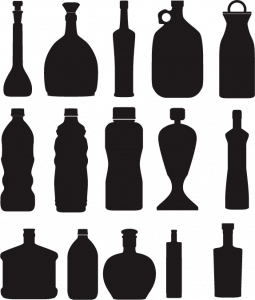
You have an unusual shaped container to stand out from the crowd.
But decorating it can be darn near impossible.
Which method do you choose?
- Labels
- Shrink Sleeves
- Direct Screen Print
In Each Case, There May Be Pros & Cons
Depending upon your container shape and composition, the options may be limiting or ideal.
For instance, self-adhering labels are often a go-to solution, particularly when the product is first launched and the market receptiveness is untested. They allow for detailed graphic design & flexibility for short or long run packaging but may not adhere if the container shape is concave or the surface is textured.
On the other hand, Shrink Sleeve labels offer full graphic design but may be more ideal for longer run applications as the process is more costly than self stick labels.
Direct Screen print is often used on special shape and textured containers. It offers a high-end look & durability but it often is best suited for 1-3 color spot printing. In addition, tooling is often very costly so volume is best for mid to high range applications.
So How Do You Decide?
You Should First Consider a Few Key Questions:
- Will the print method fit with your shaped container? This one is pretty obvious, if you have a speckled, plastic, round container, shaped like an orange, a label probably will not adhere well. So you can eliminate this option up front.
- Are you trying to show the contents or maximize the graphics? If the surface shape is the draw, a shrink sleeve label is ideal to enhance that shape by maximizing the graphics. But if you want to show the contents, direct silk-screen print may be more ideal by minimizing the graphics for a high-end look. But be aware, the amount of printable space may be limited because of the shape.
- Are there special environmental conditions that your product will be exposed to? Direct Screen print tends to lend itself quite well for long-term durability. This is because the inks are very dense and long lasting. But labels with special coatings or laminations may prove to be durable enough while offering enhance graphics and flexibility.
- What quantities do you plan to package over the next three months? This may seem like a strange question but since there are often material stock minimums, or tooling requirements, it makes sense to know if the volume needs justify the investment required. Often in the print packaging world, the unit price decreases as volume increases so knowing this will also help you to understand budgetary impacts.
- Is there required textual information from your retailer or agency? (i.e. FDA?). You have to meet the standard but the graphics cannot be cluttered. Sometimes a booklet label may be the ideal way to comply with regulations while minimizing clutter on the packaging. There are other alternatives as well.
- How are your products packaged and transported? This speaks once again to the durability of the product packaging. You don’t want to invest in the print only to have it scuff and rip in transit.
- What s the Production Process? In any of the above cases, there may be several steps in the process to finalize the package. Labels are printed and then applied to the product which is then filled. Shrink sleeves require steam or heat shrinking application before filling and fewer companies have this service compared to labeling. So understanding the supply chain process is critical. The same goes for direct screen print, as special tooling and equipment may be needed for special shaped containers.
Knowing this information should help you better assess the ideal print method with your print packaging manufacturer.

Action items:
- Answer questions 1-6 above
- Discuss these items with your printer or contract filler
- Find out the required steps in question # 7 to determine costs associated to produce from start to finish
Need additional help?
Shoot us an email with the answers to the questions above and we will be happy to provide a complimentary initial assessment.

